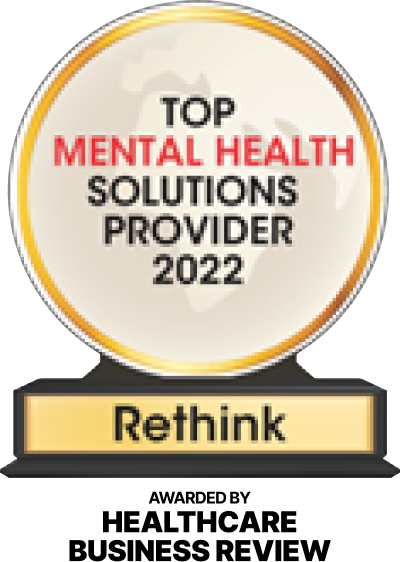Mindfulness is a word that seems to be everywhere lately, but what does it mean and how can you use it in your everyday life? “Mindfulness is a superpower,” says leadership expert and author of The Mindful Day Laurie J. Cameron. “[It’s] the awareness that arises when we deliberately direct our attention toward our inner experience, toward others, and toward the environment around us,” she says.
“Mindfulness is a superpower.”
Harnessing the power of this mindset is critical for surviving the stresses and pressures that can come from the modern workplace. It’s no wonder more and more people are looking to bring this concept with them to the office: Research shows mindfulness can improve cognitive performance, relationships, and overall well-being. Below, Cameron explains what it means to be mindful at work, how to practice it, and the benefits of doing so.
What It Means
“Mindfulness reinforces a mindset of being open, receptive, accepting, and compassionate,” according to Cameron. “That starts with noticing your natural tendency to judge, assume you already know something, or resist what life brings or what is out of your control.” By focusing on the attitude with which you view the world, you can have an entirely different experience at work. Cameron explains what it truly means to practice mindfulness at work in three simple steps.
-
You look deeper
“Mindfulness empowers you to have more self-awareness, see others more clearly, and see situations with higher resolution,” she says. “With this new perspective, you can master emotions, make better decisions, and forge powerful relationships,” according to Cameron. Needless to say, all these things are of great use in the workplace.
-
You listen differently
“Mindful listening is training yourself to be receptive—to be willing to be changed by what you hear,” says Cameron. It’s with this attitude that you can intentionally train yourself to pause rather than interrupt and to be open to new ideas instead of focusing on defending yourself.
-
You are compassionate with yourself and others
“Research indicates that talking to ourselves with kindness in moments of overwhelm, failure, pressure, or challenge actually increases our self-confidence, motivation, and ability to perform,” Cameron says. This is incredibly important in daily life and in the office. “When we interact with our teams, clients, and partners by feeling what they feel (empathy) and wishing that they feel understood, supported, and calm, we forge connection—the foundation of good relationships and breakthrough ideas,” she says.
How to Practice
In order to see your workplace, co-workers, and yourself with this expanded perspective, you don’t need to go on a week-long silent retreat or meditate on a Himalayan mountaintop. Simply follow Cameron’s five pieces of advice for practicing mindfulness at work.
-
Start with the outcome.
Cameron suggests you begin your journey to mindfulness by focusing on a single project. “Get clear about what you intend to accomplish,” she says.
-
Work in focused intervals.
“Set a goal that is time-sensitive,” says Cameron. For instance, give yourself an hour or an hour and a half to work diligently on a project, and then take a break. For maximum focus, be sure to turn off all alerts and notifications and keep your phone out of sight during these intervals.
-
Catch yourself multitasking.
Although many consider multitasking to be an important skill, it has no place at work, according to Cameron. However, just being aware of when you are multitasking is a good foundation for working for mindfully. “Awareness is the first step to habit change,” says Cameron. “Choose the priority task, stop any others, and work sequentially, one thing at a time. Notice your impulse to jump to another activity, take a breath, and return attention to the task at hand.”
-
Take purposeful breaks.
“Create a pause and nourish your mind and body with a healthy snack or by getting outside,” Cameron says. She suggests truly getting away from your phone and computer and taking a walk in nature, daydreaming, or even doodling to escape your work for a few moments. All of these activities “re-engage your default network that boosts creativity and gives your prefrontal cortex a break,” according to Cameron.
-
Take three breaths.
When all else fails, you can use a simple breathing exercise to stay cool and collected at work. Breathe in deeply and gently exhale slowly after each breath. “With the first breath, focus on breathing to calm the mind while saying, ‘calm.’ On the second breath, relax the body while saying, ‘relax,'” Cameron explains. Finally, when you get to your third breath, ask yourself, what is most important now.
Why It Works
According to Cameron, practicing mindfulness can reduce stress and anxiety, which can be challenging to keep in check at work from time to time. “Intense feelings like frustration, anger, and fear can undermine performance, block creativity, and harm professional relationships—especially when you aren’t even aware of them,” she says. However, simply acknowledging these emotions and being aware of them can lead to a real, positive change.
Additionally, you can discover new ways to view and understand your thoughts and emotions. “You learn how to see overwhelming emotions differently and realize you are not the emotion; you are separate,” Cameron says. In doing so, you open yourself up to be able to focus on the things at work that really matter—like launching a new initiative or beginning an important project. Essentially, practicing mindfulness at work has the power to boost your overall performance, according to Cameron. “Mindfulness improves your ability to navigate uncertainty and change—such as mergers, reorganizations, new jobs, or the loss of a job—and handle difficult emotions with greater ease and mastery,” she says.
What’s more, Cameron explains that mindfulness plays a key role in creativity, motivation, and prioritization—all skills worthy of being included on a résumé. Here’s how it works:
-
Create
“We all struggle at times with the voice of doubt in our heads, that inner critic that tells us we are not doing enough or falling behind,” says Cameron. Instead of letting that voice keep you from sharing ideas and being innovative, Cameron suggests greeting the voice with thanks but reminding it (and yourself) that you’ve got this. “By befriending and quieting that voice, we are able to step back from the task before us and see potential solutions where before we saw roadblocks and problems,” she says.
-
Motivate
“Mindfulness allows us to shift from self-criticism to self-compassion,” Cameron says. This is paramount to your ability to be motivated to accomplish the tasks in front of you at work. “Research has repeatedly shown that, far from encouraging us to be slackers, self-compassion actually boosts motivation and self-confidence,” notes Cameron.
-
Prioritize
Mindfulness can help employees prioritize what’s important, eliminate multitasking, and find a greater sense of purpose and strategy, according to Cameron. “Being able to stop, calm the mind and body, and ask what is important right now—at any time during the workday—is a powerful skill and a game-changer, especially when we feel overwhelmed,” she says.
Original article published April 26, 2018 on mydomaine.com
This article originally appeared on PurposeBlue’s blog about mindful leadership.











